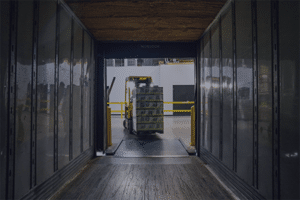19 Dec Manufacturing use case I

Reducing shipment error rates, optimizing inventory levels, customer order status notifications, and process/asset use optimization
There are several clients with very similar use cases – one is in the automotive supply chain and the other is in the metal service center business. There are several other customers that we are in process of closing that have substantially similar issues.
Problem
The most pressing problem for both clients is that they have significant error rates on shipments to their customers (> 20% in both cases). One deliberately overships product on most orders to ensure that there are no shortfalls because the cost of correcting an order is so high. The other client sends out a delivery truck to correct the error.
One of the clients strongly believes that they have excess inventory of raw materials and understands that their operations could be optimized in many ways. The other is less sure about their inventory levels and their processes.
Sticker Control Solution
Phase 1 – Shipment Error Rate Reduction
- The clients label their inventory (raw materials and finished products) with RFID tags. These tags also have both the barcode and the text they currently use to allow employees to read the details about the product, the client, the order number, etc.
- When each part is received from a supplier, an RFID tag is attached to it. This tag has a magnet so that it can be attached and removed to the part as many times as necessary. An operator uses a mobile device with the Sticker Control application, connected by Bluetooth to an RFID handheld, to record the information related to each part.
- RFID portals are installed at various points throughout their facilities.
- Before the customer shipments are finalized, the shipments are compared against the customer orders automatically so that errors can be caught prior to shipment.
Phase 2 – Inventory Optimization Algorithms
- Once the clients are tracking their assets, they will have more precise inventory counts. That will allow them to begin optimizing their inventory levels using our optimization algorithms.
Phase 3 – Customer Status Updates
- Operators can use the RFID handheld reader and the Sticker Control application to perform different operations: changing the location of the part, assigning the part to a specific machine or process, assign the part to a work order, modify the status of the part. Alternatively, stationary RFID readers will be mounted at various points throughout the facility so that this process is automated.
- The client knows in real-time (i) the location of all parts, (ii) the exact number of parts at each stage of the production process, and (iii) when each part has completed each stage in the production process.
- The Sticker Control system sends automatic notifications to the client’s customers at different points during the process (defined by our client) informing the customer of the status of their order.
Phase 4 – Process Optimization + Analytics
- An RFID reader will be mounted on forklifts and tags placed at various points around the facilities. This will allow the movements of each forklift to be tracked. The resulting spaghetti map will be analyzed to understand how improvements can be made to how inventory is stored around the facility.
- The movement of inventory through the production process will be mapped using RFID tags. This will allow us to determine the path the inventory takes while in facility and the length of time the inventory spends in each location. This basic information and the resulting analysis will allow our customers to identify inefficiencies and bottlenecks.



No Comments